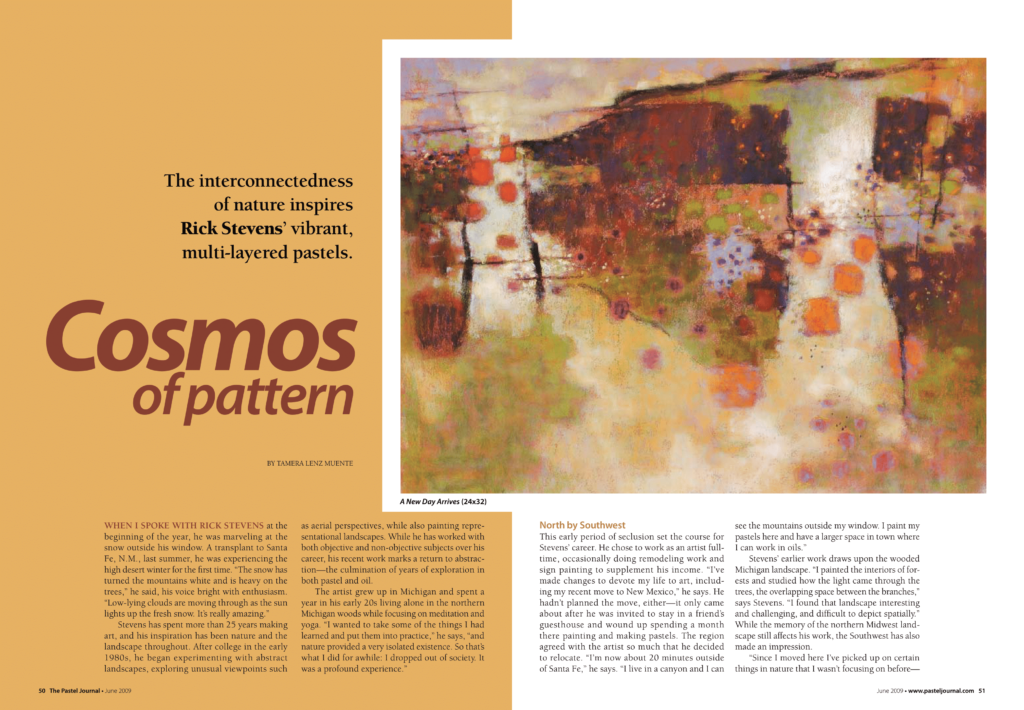The Pastel Journal | June 2009 | By Tamera Lenz Muente
When I spoke with Rick Stevens at the beginning of the year, he was marveling at the snow outside his window. A transplant to Santa Fe, N.M., last summer, he was experiencing the high desert winter for the first time. “The snow has turned the mountains white and is heavy on the trees,” he said, his voice bright with enthusiasm. “Low-lying clouds are moving through as the sun lights up the fresh snow. It’s really amazing.”
Stevens has spent more than 25 years making art, and his inspiration has been nature and the landscape throughout. After college in the early 1980s, he began experimenting with abstract landscapes, exploring unusual viewpoints such as aerial perspectives, while also painting representational landscapes. While he has worked with both objective and non-objective subjects over his career, his recent work marks a return to abstraction—the culmination of years of exploration in both pastel and oil.
The artist grew up in Michigan and spent a year in his early 20s living alone in the northern Michigan woods while focusing on meditation and yoga. “I wanted to take some of the things I had learned and put them into practice,” he says, “and nature provided a very isolated existence. So that’s what I did for awhile: I dropped out of society. It was a profound experience.”
This early period of seclusion set the course for Stevens’ career. He chose to work as an artist fulltime, occasionally doing remodeling work and sign painting to supplement his income. “I’ve made changes to devote my life to art, including my recent move to New Mexico,” he says.
He hadn’t planned the move, either—it only came about after he was invited to stay in a friend’s guesthouse and wound up spending a month there painting and making pastels. The region agreed with the artist so much that he decided to relocate. “I’m now about 20 minutes outside of Santa Fe,” he says. “I live in a canyon and I can see the mountains outside my window. I paint my pastels here and have a larger space in town where I can work in oils.”
I like to work with ambiguity, one thing flowing into the next. I try to break up borders so there aren’t separate parts, but everything flowing together.
Rick Stevens
Stevens’ earlier work draws upon the wooded Michigan landscape. “I painted the interiors of forests and studied how the light came through the trees, the overlapping space between the branches,” says Stevens. “I found that landscape interesting and challenging, and difficult to depict spatially.” While the memory of the northern Midwest landscape still affects his work, the Southwest has also made an impression.


